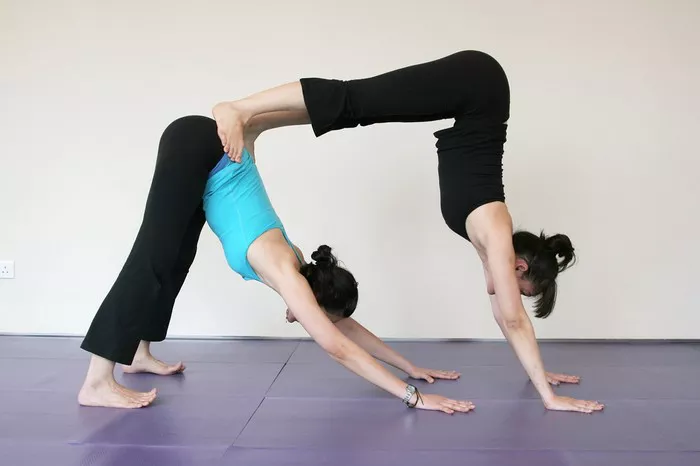Yoga is a popular form of exercise that offers a wide range of physical, mental, and emotional benefits. Among the many styles of yoga, Hatha yoga is one of the most widely practiced, known for its slow-paced movements and focus on breath control. While it may not be as intense as styles like Vinyasa or Power Yoga, Hatha yoga still provides a good workout that can contribute to calorie burning and overall fitness.
If you are wondering how many calories you can burn in a 30-minute Hatha yoga session, this article will break it down for you. We will explore the factors that affect calorie burn, the estimated calorie expenditure, and how to maximize the benefits of your Hatha yoga practice.
Understanding Hatha Yoga
Hatha yoga is a traditional form of yoga that involves holding poses (asanas) for a moderate duration while focusing on controlled breathing (pranayama). It is often recommended for beginners because of its gentle pace and emphasis on proper alignment. Unlike more vigorous forms of yoga, such as Ashtanga or Bikram, Hatha yoga is typically slow and meditative, making it a great choice for relaxation, stress relief, and flexibility enhancement.
Despite its moderate intensity, Hatha yoga still engages multiple muscle groups, improves circulation, and supports weight management by burning calories.
Factors That Affect Calorie Burn in Hatha Yoga
The number of calories burned during a Hatha yoga session can vary based on several factors:
Body Weight – Heavier individuals tend to burn more calories than lighter individuals because their bodies require more energy to perform the same movements.
Yoga Intensity – The effort and energy exerted during the session impact calorie expenditure. A more dynamic Hatha yoga class will burn more calories compared to a slow, gentle session.
Duration of the Practice – Naturally, longer sessions result in more calories burned, but even within 30 minutes, differences in intensity can affect the total expenditure.
Muscle Engagement – Holding poses that engage larger muscle groups, such as Warrior poses or Plank, will contribute to a higher calorie burn.
Individual Metabolism – Each person’s metabolism varies, influencing how efficiently their body burns calories.
Estimated Calories Burned in 30 Minutes of Hatha Yoga
Based on research and estimates from fitness sources, the number of calories burned in a 30-minute session of Hatha yoga varies depending on weight:
- A person weighing 125 lbs (56.7 kg) burns approximately 120–140 calories in 30 minutes.
- A person weighing 155 lbs (70.3 kg) burns approximately 140–175 calories in 30 minutes.
- A person weighing 185 lbs (83.9 kg) burns approximately 175–200 calories in 30 minutes.
These estimates are based on moderate-intensity Hatha yoga. If the session includes more challenging postures and transitions, calorie expenditure may be higher.
Comparing Hatha Yoga to Other Yoga Styles
Hatha yoga burns fewer calories compared to more vigorous styles. Here’s how it compares to other common yoga practices in a 30-minute session:
Vinyasa Yoga: 200–300 calories
Ashtanga Yoga: 250–350 calories
Bikram (Hot) Yoga: 300–450 calories
Power Yoga: 300–400 calories
While Hatha yoga may not burn as many calories as these styles, it still provides significant benefits, including stress reduction, improved flexibility, and enhanced mental clarity.
How to Increase Calorie Burn in Hatha Yoga
If your goal is to maximize calorie burn while practicing Hatha yoga, consider these tips:
Incorporate More Standing Poses – Poses like Warrior I & II, Chair Pose, and Tree Pose engage larger muscle groups, leading to increased calorie expenditure.
Hold Poses Longer – Extending the duration of each pose challenges your muscles, leading to higher energy consumption.
Engage Your Core – Actively engaging your core during poses enhances muscle activation and calorie burn.
Add Flowing Movements – Integrating gentle movements between poses, such as Sun Salutations, can elevate heart rate and increase energy expenditure.
Practice in a Warm Room – A slightly warmer environment can boost circulation and metabolism, helping you burn more calories.
Combine with Breathing Techniques – Dynamic breathing techniques, like Ujjayi or Kapalabhati, stimulate metabolism and support weight management.
Additional Benefits of Hatha Yoga
Beyond calorie burning, Hatha yoga provides numerous health benefits:
Improves Flexibility – Regular practice enhances joint mobility and muscle elasticity.
Strengthens Muscles – Holding poses builds strength in various muscle groups, particularly in the core, legs, and arms.
Reduces Stress and Anxiety – The meditative aspects of Hatha yoga help lower cortisol levels, promoting relaxation.
Enhances Posture and Balance – Focusing on alignment improves overall posture and body awareness.
Supports Cardiovascular Health – While not as intense as cardio workouts, Hatha yoga can still improve circulation and heart health over time.
Conclusion
While Hatha yoga may not be the most intense form of exercise, it still offers a meaningful way to burn calories and support a healthy lifestyle. On average, a 30-minute session burns between 120 and 200 calories, depending on factors like body weight, intensity, and metabolism. By incorporating more dynamic movements and holding poses for longer durations, you can maximize calorie burn while enjoying the numerous physical and mental benefits that Hatha yoga provides.
Whether your goal is weight management, stress relief, or improved flexibility, Hatha yoga is a valuable addition to any fitness routine. With regular practice, you’ll not only burn calories but also cultivate a sense of inner peace and well-being.
Related Topics:























